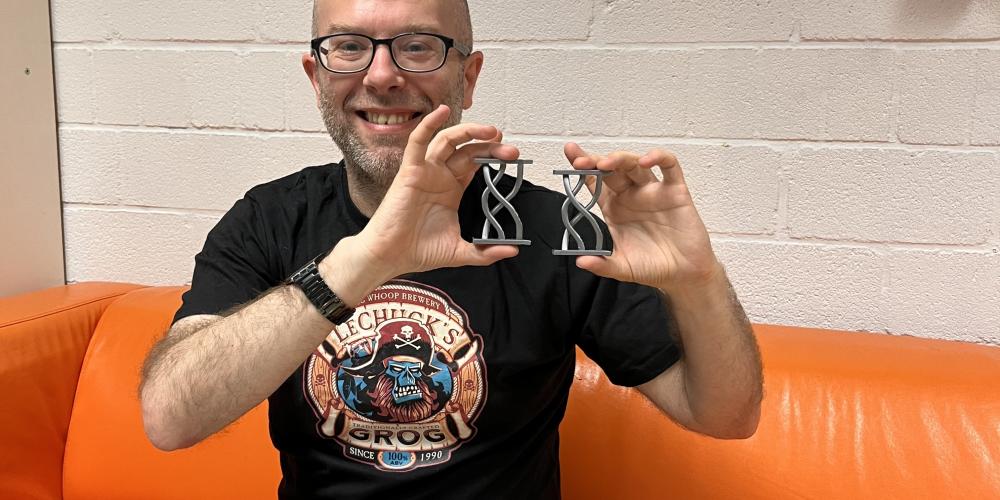
If you've ever tried to untangle a pair of earphones, you've brushed up against one of the mysteries of modern mathematics.
Perhaps not quite — but that twisted, tangled mess has more in common with deep mathematical theory than you'd think. And one researcher at the Vrije Universiteit Brussel (VUB) has just been recognized for helping untangle one of the most complicated equations in the mathematical world.
Dr. Leandro Vendramin, a mathematician at VUB, has been awarded a prestigious scientific prize for his research into skew braces — an abstract algebraic structure that is helping mathematicians around the world understand a puzzling equation that first arose in quantum physics: the Yang–Baxter equation.
“This equation, originally discovered by physicists trying to solve complex problems about particles, turned out to be full of hidden symmetries that mathematicians are still exploring today.”
What is the Yang–Baxter equation?
Imagine a braid made of three strands. You cross the first two, then the second and third, then the first two again. Now try the same process but in a different order: second and third, first two, second and third again. The big question? Do you end up with the same braid? This “braid symmetry” is a visual metaphor for the Yang–Baxter equation, which governs interactions in quantum physics but also pops up in pure math, cryptography, and even statistical mechanics.
But here is the catch: finding all solutions to this equation is, as Vendramin puts it, “super wild” — practically impossible. That’s where skew braces come in.
What is a skew brace?
Skew braces allow researchers to translate and simplify these tangled “braid-like” problems into more manageable forms.
“Think of it like this,” says Vendramin. “Before, we had dozens of puzzle pieces from different puzzles scattered across the floor. Skew braces gave us a new puzzle box where suddenly, the pieces started to fit together. Everything clicked.”
Originally discovered while Vendramin was still in Argentina, skew braces became a game-changer. They offered a clean, algebraic framework that unified many loose ideas mathematicians had been working with for years. Since then, the concept has sparked a wave of international research and new discoveries. Consequently, Vendramin and Ferran Cedó from Barcelona, were awarded the The Ferran Sunyer i Balaguer Prize, a prestigious award in the field of mathematics (The Ferran Sunyer i Balaguer Prize | Fundació Ferran Sunyer i Balaguer).
Big Ideas for Curious Minds
Even though this work lives at the highest levels of abstract mathematics, its roots — symmetry, patterns, twists, and transformations — are intuitive. It’s about seeing structure in chaos, order in tangles, and possibility in the most unexpected corners of math. Algebra might seem abstract, but at its heart, it’s about patterns — and skew braces might just be one of the most beautiful patterns we’ve discovered yet.
Want to learn more?
-
Introductory article (open access): Skew braces and the Yang–Baxter equation — Notices of the American Mathematical Society (2024)
https://www.ams.org/journals/notices/202403/rnoti-p332.pdf -
Recent survey paper: Skew Braces: a brief survey (2024)
arXiv preprint
Contact:
Dr. Leandro Vendramin: lvendramin@gmail.com